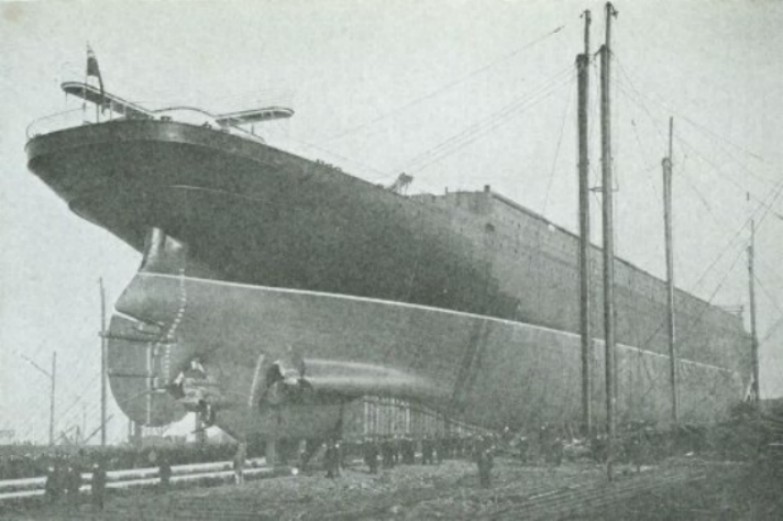Enregistrez-vous
ARMATEURS PASSES
ARMATEURS PRESENTS
NAVIRES MARCHANDS
NAVIRES MILITAIRES
OFF-SHORE
AUTRES IMAGES

| Précedente Suivante |
 |
| CARMANIA |
| Cunard liner pre- launch from John Brown's yard at Clydebank in February 1905. She stayed with Cunard until 1932 when she arrived at Blyth to be broken up. fonte: celeste Name: RMS Carmania Owner: Cunard Line Port of registry: United Kingdom Builder: John Brown & Co., Ltd., Glasgow Launched: 21 February 1905 Fate: Scrapped in 1932 at Blyth, Northumberland General characteristics Class and type: Ocean liner Tonnage: 19,524 gross tons Length: 650 feet Beam: 72 feet Installed power: Steam turbines Propulsion: three propellers Speed: 18 knots Capacity: 2,650, reduced to 1,440 in 1923 --------------------********-------------------The RMS Carmania (I) was a British passenger liner of the Cunard Line, which in World War I was converted to an armed merchant cruiser. History Further information: Battle of Trindade When launched, the Carmania and her sister ship, the Caronia, were the largest ships in the Cunard fleet and two of the fastest in the world, since they had been designed to compete with the Germans for the Blue Riband. The Carmania had steam turbines, and the Caronia had quadruple-expansion engines. Another feature that differentiated the two liners was that Carmania had two tall forward deck ventilator cowls while they were absent on Caronia.The Carmania traveled the New York-Liverpool route from 1905 to 1910, suffering one major fire in June 1910. In October 1913, while eastward bound, she responded to an SOS from the Volturno to pick up survivors in a storm, resulting in many awards for gallantry being presented to various members of her crew. Engine room of the RMS Carmania Battle of TrindadeFollowing the outbreak of World War I, the Carmania was converted into an armed merchant cruiser, equipped with eight 4.7 inch guns, and put under the command of Captain Noel Grant. She sailed from Liverpool to Shell Bay in Bermuda. She subsequently engaged and sank the German merchant cruiser SMS Cap Trafalgar near the Brazilian islands of Trindade, suffering extensive damage herself and several casualties to her crew. After repairs in Gibraltar she patrolled the coast of Portugal and the Atlantic islands for the next two years. In 1916 she was summoned to assist in the Gallipoli campaign. From May 1916 she was used as a troop ship. After the War she transported Canadian troops back from Europe. In early 1920, she returned to passenger liner service, being refitted in 1923. In 1932, she was sold to Hughes Bocklow & Co., and scrapped at Blyth[ -------------------------------------------------------------------------------------------Rgds |
| Username | |
| Armateur | |
| Ship manager | |
| Numéro IMO | |
| Type de navire | Ocean Liner - Passenger ship |
| Année et chantier de construction | |
| Date | |
| Lieu | |
| Téléchargée le | 05/01/2010 |
| Dimension | 783 x 521 |
| visites | 2090 |















